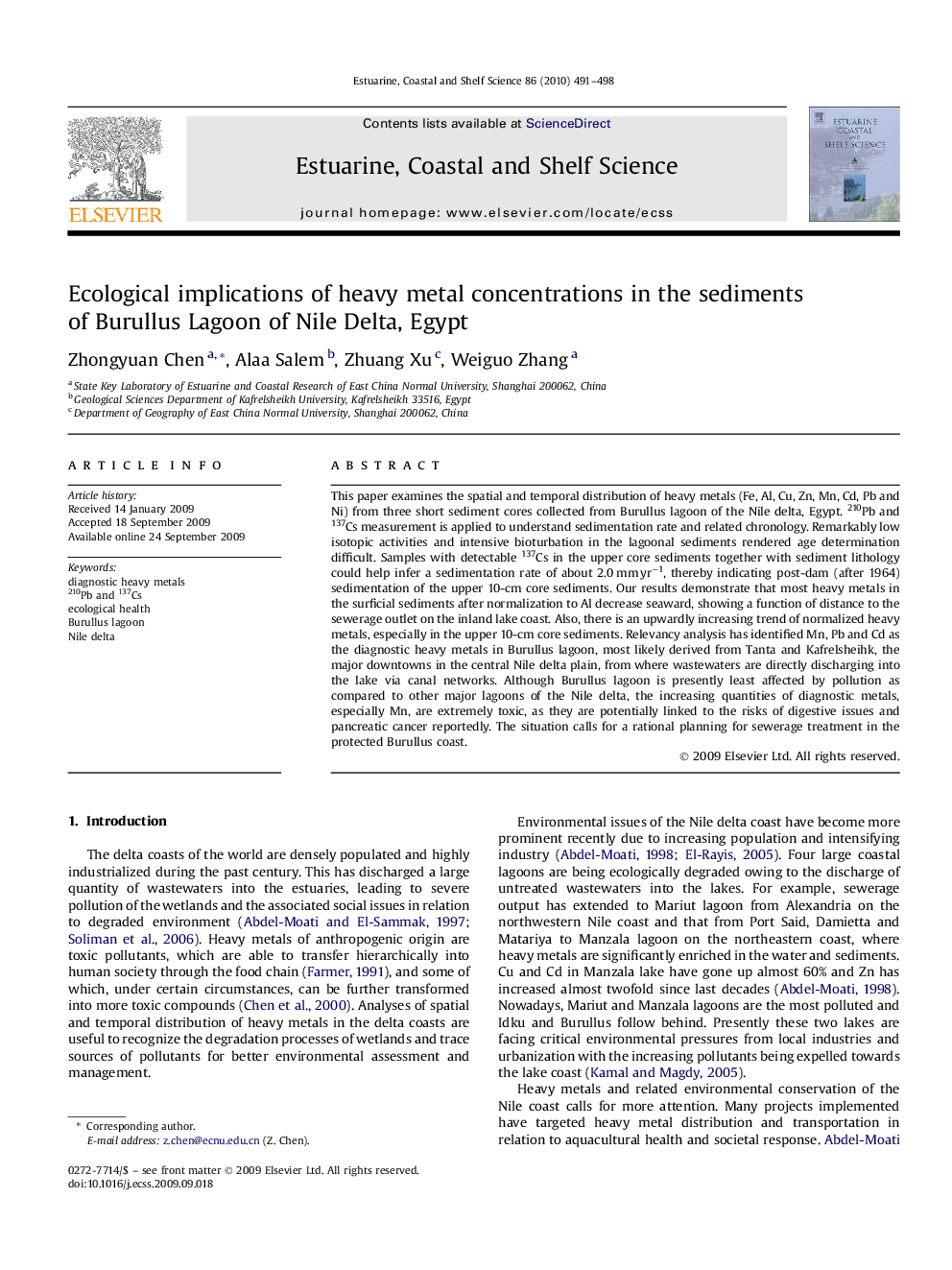| Article ID | Journal | Published Year | Pages | File Type |
|---|---|---|---|---|
| 4540915 | Estuarine, Coastal and Shelf Science | 2010 | 8 Pages |
This paper examines the spatial and temporal distribution of heavy metals (Fe, Al, Cu, Zn, Mn, Cd, Pb and Ni) from three short sediment cores collected from Burullus lagoon of the Nile delta, Egypt. 210Pb and 137Cs measurement is applied to understand sedimentation rate and related chronology. Remarkably low isotopic activities and intensive bioturbation in the lagoonal sediments rendered age determination difficult. Samples with detectable 137Cs in the upper core sediments together with sediment lithology could help infer a sedimentation rate of about 2.0 mm yr−1, thereby indicating post-dam (after 1964) sedimentation of the upper 10-cm core sediments. Our results demonstrate that most heavy metals in the surficial sediments after normalization to Al decrease seaward, showing a function of distance to the sewerage outlet on the inland lake coast. Also, there is an upwardly increasing trend of normalized heavy metals, especially in the upper 10-cm core sediments. Relevancy analysis has identified Mn, Pb and Cd as the diagnostic heavy metals in Burullus lagoon, most likely derived from Tanta and Kafrelsheihk, the major downtowns in the central Nile delta plain, from where wastewaters are directly discharging into the lake via canal networks. Although Burullus lagoon is presently least affected by pollution as compared to other major lagoons of the Nile delta, the increasing quantities of diagnostic metals, especially Mn, are extremely toxic, as they are potentially linked to the risks of digestive issues and pancreatic cancer reportedly. The situation calls for a rational planning for sewerage treatment in the protected Burullus coast.
